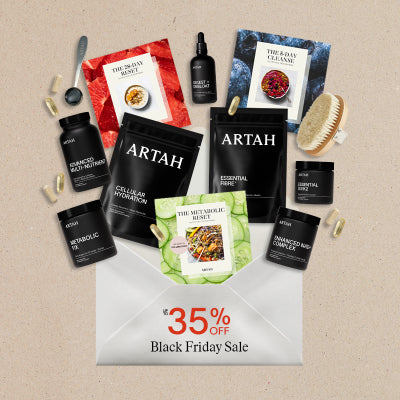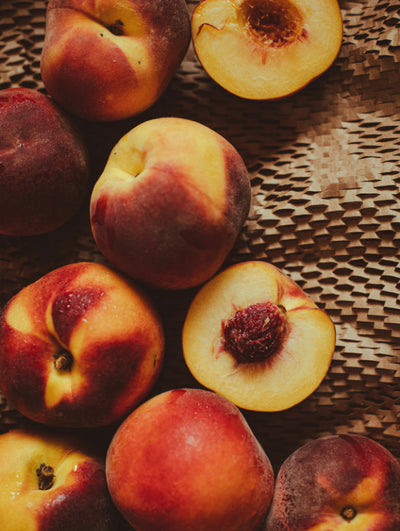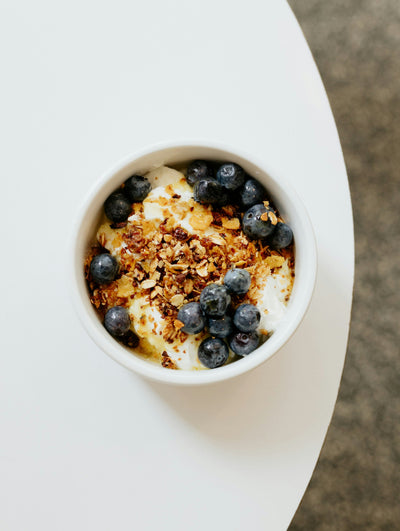The holidays are around the corner, and the invitations for social celebrations are already coming in thick and fast. Inevitably, this time of year brings an influx of alcohol, sugar, indulgent foods, and a change in our usual eating patterns. Eating later, having more frequent indulgent meals, getting less sleep and drinking more can impact our gut in numerous ways, and the combination of microbial changes, altered motility, and increased inflammation is the trifecta of bloating.
The holidays are a time for joy, not rigidity, BUT - we still want to feel good, so it’s important to strike a balance between moderation and pleasure. Here are 7 ways to help beat the holiday bloat.
1. Keep Moving
Prioritise daily movement that incorporates impact exercises specifically to promote bowel regularity; these can include power walking, running, skipping, jumping or plyometric based movements, which in turn can help alleviate bloating. Movement helps to massage the Gi tract, increase blood flow and circulation to push waste through the bowel. Don’t get too caught up in the length of session - consistent exercise is more important than perfect exercise. Try to use micro habits like taking short power walks after more indulgent meals, taking the stairs whenever possible, standing instead of sitting, getting off early on our commute, or even doing 3 minutes of skipping each day.
2. Stay Hydrated
Dehydration is common at this time of year due to the increase in alcohol, sugar and salt. This causes the body to hold onto water, AKA - water retention. Whilst this isn’t true bloating, it can still leave us feeling puffy and bloated, which is why hydration is key. Dehydration can also lead to constipation, exacerbating bloating further. Drink 2L of water a day in herbal tea and filtered water to promote bowel regularity and help eliminate excess waste from the body. Electrolytes can make all the difference; try cellular hydration, which will help rehydrate with essential minerals, and promote energy, focus, and combat fatigue.
3. Focus on Fibre
Indulgent foods often lack fibre, and as a population, we’re already only hitting about 60% of the recommended fibre intake on average. Fibre is great for a lot of things, and regularity is one of them. Make a big effort to keep up with your fibre intake throughout the holidays; aim for 30g-40g a day, comprised of 8 handfuls of vegetables daily, 3 servings of fruit, and some high impact fibre foods, like beans, lentils, and nuts. This will promote bowel regularity to reduce bloating and aids digestion by feeding our gut microbes. If your fibre intake is currently low, increase it slowly leading up to the holidays, as a drastic increase can exacerbate bloating as the microbes adjust to the influx of fibre. Front load your day with veggies and fibre to help make sure you have a good foundation going into the evening celebrations.
4. Choose Your Battles
When navigating holiday parties or buffet style eating, be intentional with what you go for. It’s easy to fall into the habit of eating everything on offer just because it’s there, but it’s important to reframe your mindset. If it’s truly enjoyable, and really makes you feel good, then go for it. If it’s not actually that fulfilling, AND it makes you feel bad – it's a hard pass. This takes time to master but will help you feel less restricted and more empowered with your choices.
Another core strategy is having a plan when you know you want to indulge a little more. For example. If you’re looking forward to enjoying some drinks, be more mindful about your nutrition and have your electrolytes on hand to help with your next day energy. If you’re craving dessert, frontload your plate with protein and vegetables and avoid the refined starches and simple carbohydrates. Slowing down, chewing more, and staying phone free can also help – overconsumption can trigger bloating, so being a little more mindful can help increase enjoyment AND decrease the bloating.
5. Try Our Bloating All Stars
Digest + Debloat: best for encouraging digestion and offering immediate relief from discomfort if you’ve overindulged. This one stays in our handbags when we’re out – out absolute must have!
G.I. Cleanse: best for combating bloating from a microbial level. Full of polyphenols and herbs that support good bacteria over bad bacteria, GI Cleanse is perfect for when you need a little more support.
G.I. Fix: best for a sluggish bowel, this formula contains herbal prokinetics (pro-movement) which support healthy bowel movements without the harsh effect of a laxative.

6. Avoid Mindless Snacking
Promoting healthy gut motility is a key part of bloating prevention, and the best way to do this is to allow the gut to do its thing. The migrating motor complex (MMC) is the natural mechanism that pushes food through our GI tract, but it is only triggered after a few hours without food. Try to avoid continual snacking and instead, have 3 balanced meals with a 4-hour gap between each meal. Allowing our gut to rest between each meal also helps to enhance our digestive efficiency and increase nutrient absorption. This is a simple but transformative practice, and when we snack or graze continually, these crucial processes are interrupted. Believe it or not, snacking less can also help improve energy; digestion takes about 50% of our energy, so eating more balanced meals less frequently can really help to regulate our energy levels throughout the day.
7. Beware Of The Big 3
Deep fried foods, chemical sweeteners, and super sweet foods are some of the most notorious foods for bloating. These hit us where it hurts - they can slow gastric emptying, impair gut motility, disrupt water balance in the gut, increase fermentation, and promote inflammation. Need we say more?


















































